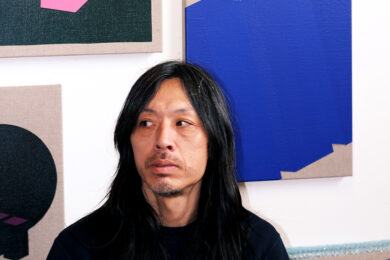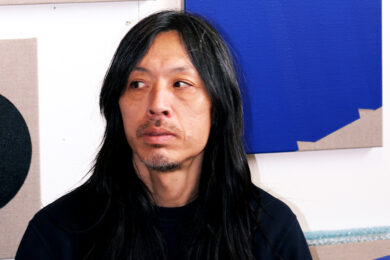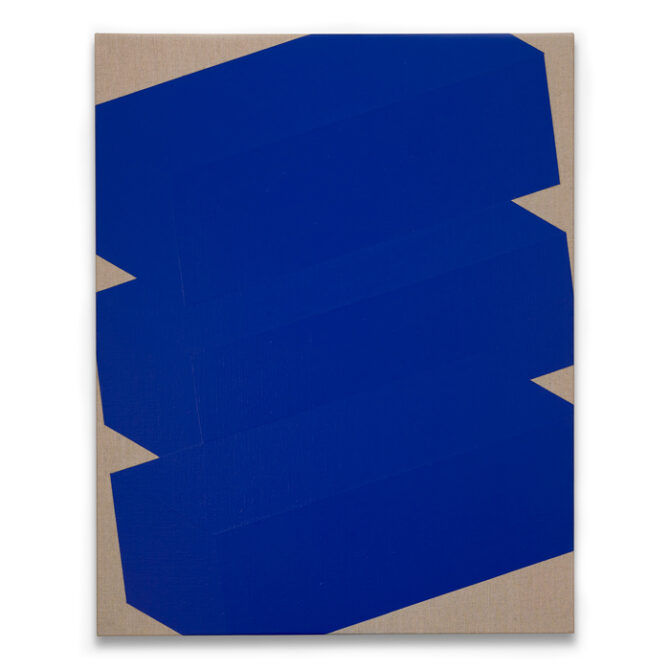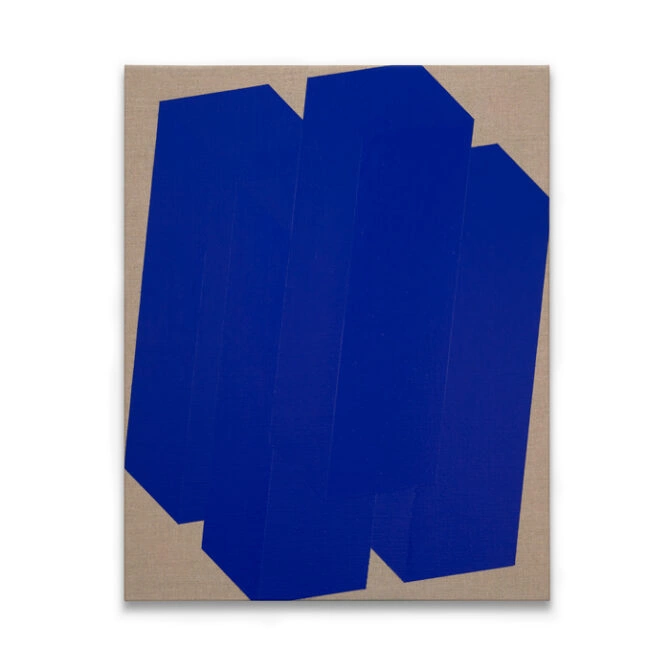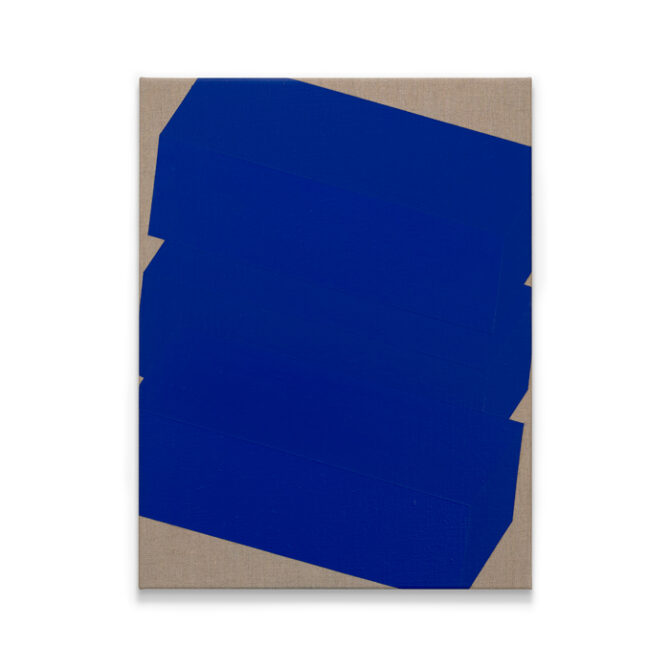
In Conversation: Kubota Fumikazu
Kubota Fumikazu, a Japanese-born Melbourne-based artist, is best known for his hard-edged, abstract style paintings work inspired by colours sourced from vintage Japanese design colour books.
In the lead up to our Artist in Focus featuring Fumikazu’s latest body of work, As High as Blue Skies, As Deep as Blue Oceans, we caught up with him to learn more about what prompted his shift to a new direction featuring a minimalist palette. Read on below!
Your collection ‘As High As Blue Skies, As Deep As Blue Oceans’ with its monochrome palette is strikingly different from your previous work. What drew you to cobalt blue in particular?
I chose cobalt blue because after our long lockdown, I thought this was a good opportunity to cleanse the past, and signal a fresh start for my practice. The colour blue has an optimistic image to it, but also loss or sadness. We can’t just see and celebrate the bigger picture, we need to remember people are still struggling and grieving caused by the pandemic. We need to see the small details too.
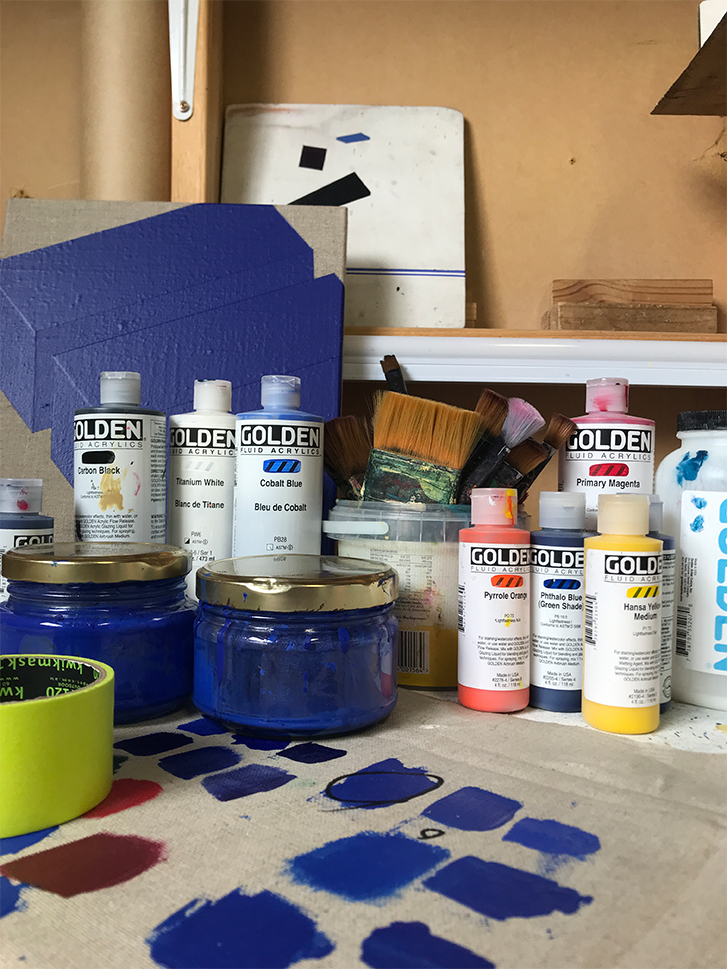
You mention that Melbourne’s lockdowns over the past few years have influenced your work. Can you tell us a bit more about that?
It was a difficult time for everyone including myself. I didn’t realize until recently I was composing heavy borders and my colours were almost black. We were always dreaming of escape and searching for the light. I probably still will work with blacks and heavy borders, but in different ways. I still love all of the paintings I painted previously but it feels like that was then, and this is now.
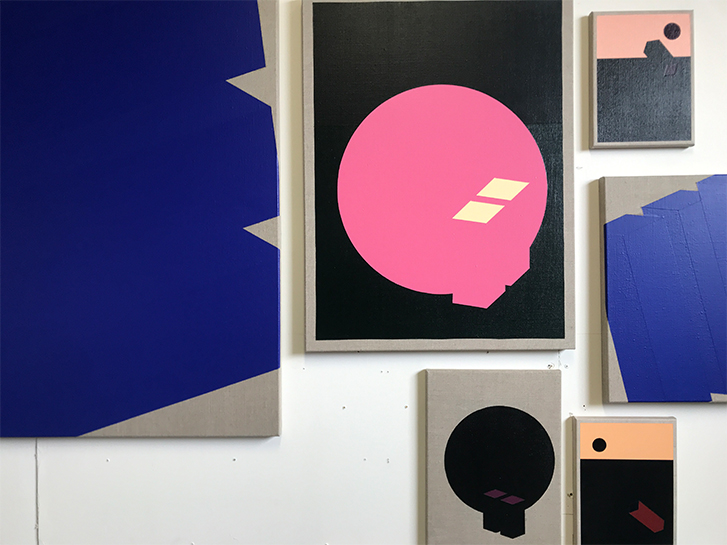
During the first lockdown I made a series of works at home as I didn’t have access to my studio. These were small paintings made at a desk in my son’s bedroom. They were borne out of the circumstances but I love working at that scale now, and have a couple of smaller works in this series.
Your works contain intricate layers, and the contrast of bold blocks of colour against the raw linen is very striking. Can you tell us some more about your process of making the works?
I start with pencil and paper as everyone does. Then I play with composition in Adobe Illustrator. I use software because I can compose and play with scale and finalize every single millimetre of detail. I can also play with colour too. I am pretty obsessed with detail and working on computer first gives me the opportunity to try a thousand concepts and compositions. Once I know what I am painting, I mix my colours and test them on my canvas. I also order my stretcher bars at this point. I stretch the canvas then I transfer all line drawing to my canvas with pencil. My measurements are in my software, so I can draw lines exactly where I planned. Then of course there are stuff ups involved. I use masking tape to mask each section of my painting so I have a nice ridge where each section meets. After I repeat many layers of paint until I am happy with it, then I remove the tape. Then repeat and paint another layer…
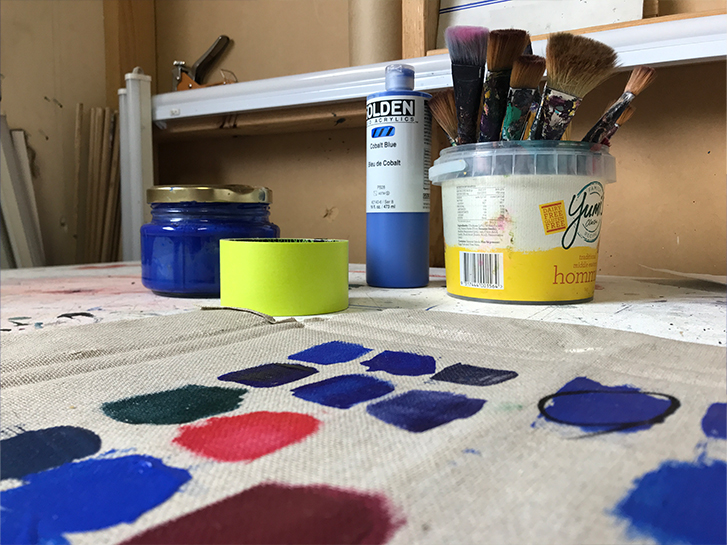
If you could collaborate with any other artist or brand, who would it be and why?
I don’t have any particular artists but it would be cool to collaborate with someone completely different from my practice. Loose and free. Light and sweet. Someone who is not chasing stillness. One of my favorite bands at the moment is a Japanese psychedelic band called Sundays and Cybele. I like to listen them when I work in my studio, so it would be great to be a part of their world.
